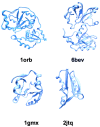Thiosulfate-Cyanide Sulfurtransferase a Mitochondrial Essential Enzyme: From Cell Metabolism to the Biotechnological Applications
- PMID: 35955583
- PMCID: PMC9369223
- DOI: 10.3390/ijms23158452
Thiosulfate-Cyanide Sulfurtransferase a Mitochondrial Essential Enzyme: From Cell Metabolism to the Biotechnological Applications
Abstract
Thiosulfate: cyanide sulfurtransferase (TST), also named rhodanese, is an enzyme widely distributed in both prokaryotes and eukaryotes, where it plays a relevant role in mitochondrial function. TST enzyme is involved in several biochemical processes such as: cyanide detoxification, the transport of sulfur and selenium in biologically available forms, the restoration of iron-sulfur clusters, redox system maintenance and the mitochondrial import of 5S rRNA. Recently, the relevance of TST in metabolic diseases, such as diabetes, has been highlighted, opening the way for research on important aspects of sulfur metabolism in diabetes. This review underlines the structural and functional characteristics of TST, describing the physiological role and biomedical and biotechnological applications of this essential enzyme.
Keywords: alpha-beta domain; biotechnology; cyanide; hydrogen sulfide; iron-sulfur clusters; redox system; rhodanese.
Conflict of interest statement
The authors declare no conflict of interest.
Figures




Similar articles
-
Unraveling the role of thiosulfate sulfurtransferase in metabolic diseases.Biochim Biophys Acta Mol Basis Dis. 2020 Jun 1;1866(6):165716. doi: 10.1016/j.bbadis.2020.165716. Epub 2020 Feb 19. Biochim Biophys Acta Mol Basis Dis. 2020. PMID: 32061776 Review.
-
Evidence for a functional genetic polymorphism of the human thiosulfate sulfurtransferase (Rhodanese), a cyanide and H2S detoxification enzyme.Toxicology. 2006 Aug 1;225(1):1-11. doi: 10.1016/j.tox.2006.04.054. Epub 2006 May 9. Toxicology. 2006. PMID: 16790311
-
Thiosulphate sulfurtransferase: Biological roles and therapeutic potential.Redox Biol. 2025 May;82:103595. doi: 10.1016/j.redox.2025.103595. Epub 2025 Mar 14. Redox Biol. 2025. PMID: 40107018 Free PMC article. Review.
-
Identification of putative sulfurtransferase genes in the extremophilic Acidithiobacillus ferrooxidans ATCC 23270 genome: structural and functional characterization of the proteins.OMICS. 2005 Spring;9(1):13-29. doi: 10.1089/omi.2005.9.13. OMICS. 2005. PMID: 15805776
-
Structural and biochemical analyses indicate that a bacterial persulfide dioxygenase-rhodanese fusion protein functions in sulfur assimilation.J Biol Chem. 2017 Aug 25;292(34):14026-14038. doi: 10.1074/jbc.M117.790170. Epub 2017 Jul 6. J Biol Chem. 2017. PMID: 28684420 Free PMC article.
Cited by
-
Expanding Yarrowia lipolytica's metabolic potential for detoxification of cyanogenic glycosides in edible plants.Commun Biol. 2025 Feb 6;8(1):188. doi: 10.1038/s42003-025-07628-5. Commun Biol. 2025. PMID: 39915589 Free PMC article.
-
Regulation of mammalian cellular metabolism by endogenous cyanide production.Nat Metab. 2025 Mar;7(3):531-555. doi: 10.1038/s42255-025-01225-w. Epub 2025 Mar 3. Nat Metab. 2025. PMID: 40033006 Free PMC article.
-
Hypothiocyanite and host-microbe interactions.Mol Microbiol. 2023 Mar;119(3):302-311. doi: 10.1111/mmi.15025. Epub 2023 Feb 6. Mol Microbiol. 2023. PMID: 36718113 Free PMC article.
-
Plant Cyanogenic-Derived Metabolites and Herbivore Counter-Defences.Plants (Basel). 2024 Apr 29;13(9):1239. doi: 10.3390/plants13091239. Plants (Basel). 2024. PMID: 38732453 Free PMC article. Review.
-
Cyanide and Cyanogenic Compounds-Toxicity, Molecular Targets, and Therapeutic Agents.Biomolecules. 2024 Nov 7;14(11):1420. doi: 10.3390/biom14111420. Biomolecules. 2024. PMID: 39595596 Free PMC article. Review.
References
-
- Lang K. Die Rhodanbildung Im Tierkorper [Thiocyanogen in the Bodies of Animals] FEBS J. 1933;259:243–256.
-
- Westley J. Rhodanese. Adv. Enzymol. Relat. Areas Mol. Biol. 1973;39:736–737. - PubMed
-
- Sorbo B. On the Properties of Rhodanese. Acta Chem. Scand. 1951;5:724–726.
Publication types
MeSH terms
Substances
LinkOut - more resources
Full Text Sources

